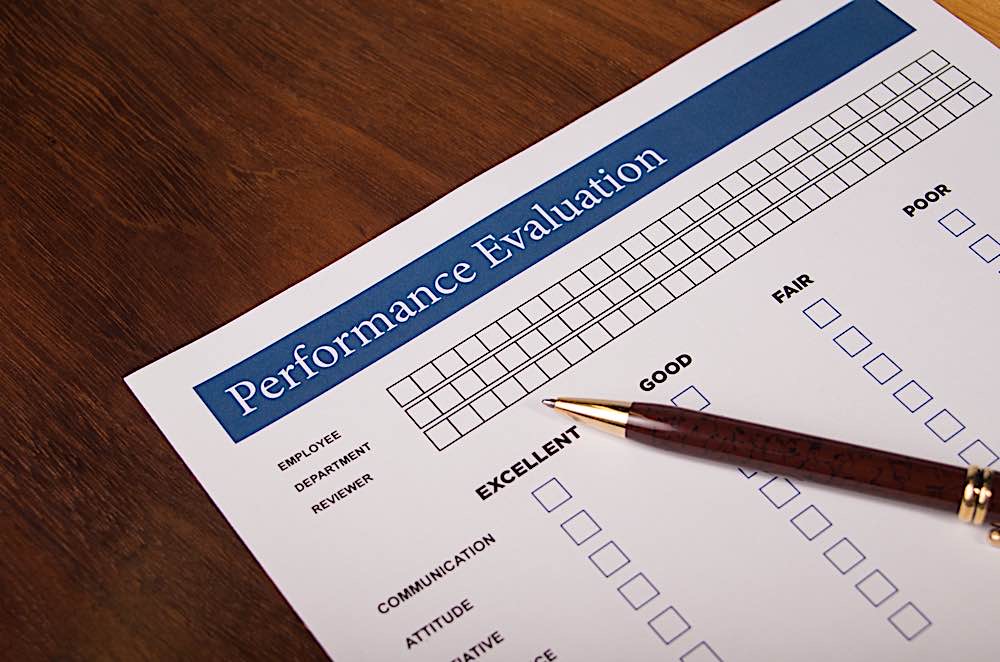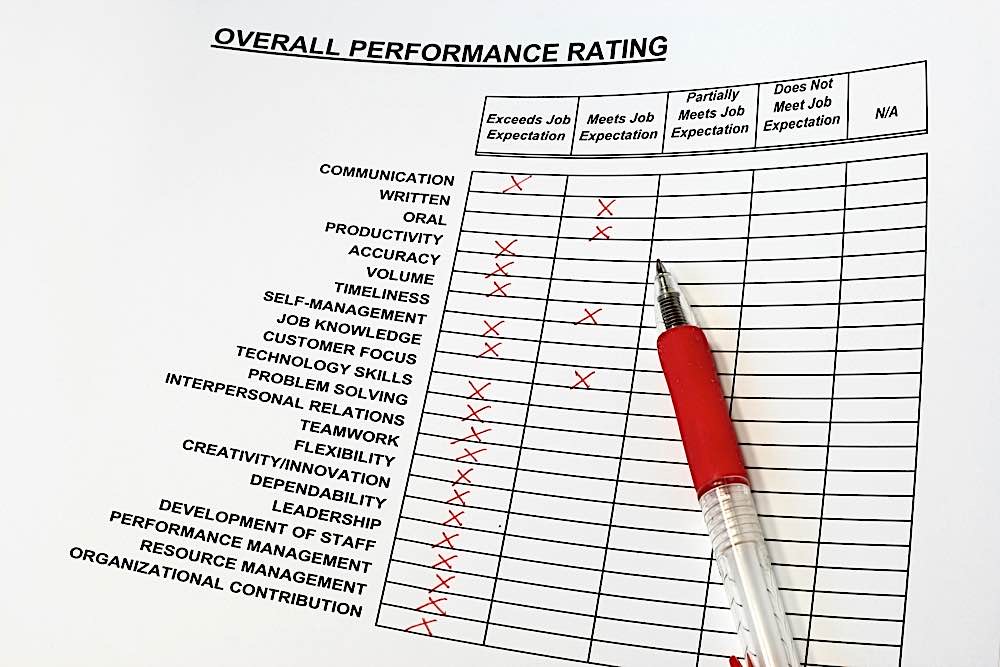
Are Performance Review Practices “Broken”? – What HR Managers and Payroll Managers Need to Know
Performance review practices have been a critical aspect of the business world for decades, providing organizations with valuable insights into employee performance and growth. However, a recent survey[1] has revealed that only 26 percent of companies in North America believe their performance management systems are effective. Furthermore, a Gallup survey conducted last year[2] found that 95 percent of managers are dissatisfied with their organization’s review system. This raises the question: are performance review practices “broken”?
In this article, we will explore this issue in-depth and provide HR managers with essential information on how to address these concerns.
The Problem with Traditional Performance Reviews
Traditional performance reviews often focus on numeric ratings and rankings, which can create an overly competitive environment and foster a short-term mindset among employees. Moreover, these systems tend to emphasize the negatives and can lead to employees becoming demotivated and disengaged. Many managers are also dissatisfied with the time-consuming nature of these reviews and question their overall effectiveness. Several reasons contribute to the failure of traditional performance review practices:
Inaccurate Evaluation
Traditional performance reviews often rely on subjective evaluations and may not accurately reflect an employee’s overall performance. Managers may have difficulty recalling an employee’s achievements or struggles over an extended period, leading to inaccurate assessments. Additionally, biases such as recency bias, favoritism, and the halo effect can further compromise the accuracy of these evaluations.
Infrequent Feedback
Annual or semi-annual reviews may not provide enough opportunities for feedback and improvement. Employees may feel disconnected from their goals and may not receive the guidance they need to grow and develop. This infrequent feedback can also lead to a lack of trust between employees and managers, as well as misunderstandings and miscommunications.
Lack of Alignment with Company Goals
Traditional performance reviews may not effectively align individual goals with company objectives, leading to misaligned expectations and reduced employee engagement. Without a clear understanding of how their efforts contribute to the organization’s success, employees may struggle to see the value in their work and become disengaged.
Time-Consuming Process
The extensive paperwork and administrative tasks associated with traditional performance reviews can consume significant time and resources, detracting from the overall productivity of managers and employees alike. This can also lead to delays in feedback, causing employees to lose momentum and motivation.
Neglect of Strengths and Development
Traditional performance reviews often focus on identifying weaknesses and areas for improvement, while overlooking employees’ strengths and potential for growth. This approach can demotivate employees, hinder their development, and prevent them from reaching their full potential.

Alternatives to Traditional Performance Reviews
To address the shortcomings of traditional performance review practices, many organizations have begun exploring alternative approaches that emphasize ongoing feedback, goal-setting, and employee development. Some of these alternative performance management systems include:
Continuous Feedback
Instead of relying on annual or semi-annual reviews, organizations can implement systems that encourage regular feedback between managers and employees. This approach allows employees to receive timely input on their performance, enabling them to make adjustments and improvements throughout the year. Regular check-ins, weekly or monthly one-on-one meetings, and real-time feedback platforms can facilitate this continuous feedback process.
Goal-Setting and Alignment
By setting clear, measurable goals that align with organizational objectives, employees can have a better understanding of their role within the company and how their individual contributions impact overall success. This approach can lead to increased engagement, motivation, and performance. The use of SMART (Specific, Measurable, Achievable, Relevant, Time-bound) goals can help employees and managers create meaningful objectives that drive progress and growth.
Employee Development Plans
Focusing on employee development can be a more effective way to improve performance than simply assigning ratings or rankings. By creating personalized development plans, employees can gain a clear understanding of the skills and competencies they need to develop and can receive the necessary support to achieve their goals. These plans should include short-term and long-term objectives, along with action steps, resources, and timelines for achieving them.
Peer and Self-Assessments
In addition to manager evaluations, incorporating peer and self-assessments can provide employees with a more comprehensive understanding of their performance. This approach can encourage collaboration, support, and accountability among team members. By involving employees in the assessment process, organizations can create a more inclusive and transparent performance management system that fosters trust and communication.
Agile Performance Management
Inspired by agile methodologies used in software development, agile performance management focuses on flexibility, adaptability, and continuous improvement. This approach emphasizes frequent feedback, iterative goal-setting, and cross-functional collaboration, allowing organizations to respond quickly to changing circumstances and ensure employee goals remain relevant and aligned with company objectives.

Implementing a Modern Performance Management System
For organizations looking to revamp their performance review practices, here are some steps HR managers can take to implement a more modern and effective performance management system:
Assess Current Systems
Begin by evaluating your current performance review practices and identifying the areas where improvements can be made. Consider conducting employee and manager surveys to gain insights into the overall satisfaction and effectiveness of your existing system. Analyze the results and identify common themes and concerns that need to be addressed.
Research Best Practices
Investigate alternative performance management systems and identify the practices that align with your organization’s culture, goals, and objectives. This may involve researching industry trends, consulting with other HR professionals, or attending conferences and workshops on performance management. Benchmark your organization against industry leaders to understand how your performance management practices compare.
Develop a Plan
Once you have identified the best practices for your organization, create a detailed plan outlining the steps necessary to implement the new performance management system. This plan should include specific goals, timelines, and resources required for a successful implementation. It should also address potential challenges and outline contingency plans to overcome them.
Communicate Changes
Clearly communicate the changes to your performance management system with all employees and managers. Provide training and support to ensure everyone understands the new processes and expectations. Encourage open dialogue and address any concerns or questions that arise during the transition.
Monitor Progress
Regularly review and assess the effectiveness of your new performance management system. Gather feedback from employees and managers to identify any areas for improvement and make adjustments as needed. Continuously refine the system to ensure it remains relevant and effective in supporting employee performance and development.
Celebrate Successes
Recognize and reward employees for their achievements and progress under the new performance management system. This can help to reinforce the value of the new system and encourage continued engagement and improvement. Consider implementing a recognition program that celebrates both individual and team accomplishments, fostering a culture of appreciation and support.
Creating a Feedback-Driven Culture
To successfully implement a modern performance management system, organizations must foster a culture of continuous feedback and open communication. This involves promoting a positive feedback environment where employees feel comfortable sharing their thoughts and ideas, as well as receiving constructive criticism. Here are some strategies to create a feedback-driven culture:
Encourage Open Dialogue
Promote open communication by encouraging employees to voice their opinions, ask questions, and provide feedback to their peers and managers. Regular team meetings, town halls, and open-door policies can create opportunities for dialogue and collaboration.
Train Managers in Effective Feedback
Equip managers with the skills and tools needed to provide effective feedback. Offer training sessions on active listening, providing constructive criticism, and facilitating difficult conversations.
Normalize Feedback
Integrate feedback into the daily operations of the organization by making it a normal part of conversations, meetings, and decision-making processes. This can help reduce the stigma associated with feedback and create a more open and supportive environment.
Leveraging Technology in Performance Management
Modern technology can play a crucial role in enhancing performance management systems by streamlining processes, providing real-time feedback, and facilitating communication[3]. Here are some ways to leverage technology in performance management:
Performance Management Software
Implement performance management platforms that enable employees to set goals, track progress, and receive real-time feedback. These platforms can help automate administrative tasks, provide valuable insights, and encourage ongoing communication between employees and managers.
Collaboration Tools
Utilize collaboration tools and communication platforms to facilitate teamwork, information sharing, and feedback. Tools such as Slack, Microsoft Teams, or Google Workspace can help employees stay connected, engaged, and aligned with organizational objectives.
Data Analytics
Harness the power of data analytics to gain insights into employee performance and identify trends, patterns, and areas for improvement. By analyzing performance data, organizations can make informed decisions and develop targeted strategies for employee development and growth.
Overcoming Resistance to Change
Implementing a new performance management system can be met with resistance from employees and managers who are accustomed to traditional practices. To overcome this resistance, organizations should take the following steps:
Communicate the Benefits
It is essential to clearly articulate the benefits of the new performance management system to employees and managers, as doing so can help them understand the value it brings to their work experience. By highlighting how the new system will improve their work environment, support their personal and professional growth, and contribute to the organization’s overall success, employees and managers are more likely to be receptive to the changes.
Involve Employees in the Process
Encouraging employee participation in the development and implementation of the new performance management system is crucial for its success. By involving employees in the process, organizations can help ensure that the new system meets the needs and expectations of the workforce. This approach can also increase buy-in and ownership, as employees are more likely to embrace a system they helped create.
Provide Ongoing Support
Offering training, resources, and support is vital to help employees and managers adapt to the new performance management practices. By addressing concerns and challenges as they arise, organizations can provide guidance to ensure a smooth transition. This support can take various forms, including training sessions, workshops, and access to online resources, all aimed at equipping employees and managers with the necessary skills and knowledge to succeed within the new system.
Measuring the Success of Your Performance Management System
It is essential to evaluate the success of your new performance management system to ensure it is effectively supporting employee performance and development. Consider the following metrics to measure the success of your system:
Employee Engagement
Monitoring employee engagement levels is a critical aspect of measuring the success of a new performance management system. Increased engagement can indicate the effectiveness of your new system. By consistently evaluating engagement levels, organizations can ensure that employees are actively participating in performance management activities and are committed to their personal and professional growth.
Goal Achievement
Tracking the number of employees who successfully achieve their performance goals and objectives is an essential metric to assess the impact of the new performance management system on individual and organizational performance. By closely monitoring goal achievement, organizations can determine whether the new system is effectively driving employee performance and contributing to the overall success of the company.
Retention and Turnover
Analyzing employee retention and turnover rates is a crucial aspect of determining whether the new performance management system is positively impacting employee satisfaction and commitment to the organization. A well-designed and effective performance management system can lead to higher retention rates, as employees feel supported, engaged, and motivated to succeed in their roles.
Feedback Quality and Frequency
Measuring the quality and frequency of feedback provided by managers and employees is essential to assess the effectiveness of the system in promoting a feedback-driven culture. High-quality feedback can contribute significantly to employee development, helping individuals to identify their strengths and areas for improvement, while also providing guidance on how to address these areas.
Key Takeways
The traditional performance review practices may indeed be “broken” for many organizations, leading to dissatisfaction among managers and employees alike. By exploring alternative performance management systems and implementing modern practices that emphasize ongoing feedback, goal-setting, and employee development, HR managers can help their organizations create more effective, engaging, and successful performance management systems.
Creating a feedback-driven culture, leveraging technology in performance management, overcoming resistance to change, and measuring the success of the new system are additional aspects that HR managers should consider when implementing a modern performance management system. By taking a comprehensive approach and addressing these challenges, organizations can ensure they are well-equipped to adapt to the changing needs of their workforce.
In a world that is constantly evolving, it is crucial for organizations to adapt their performance management systems to keep pace with the changing needs of their workforce. By embracing modern practices, HR managers can ensure that their organizations remain competitive and continue to attract and retain top talent. In doing so, they can ultimately drive the success and growth of their companies.
SOURCES
[2] https://www.gallup.com/workplace/238073/re-engineering-performance-management.aspx


 Our HR solutions experts can recommend the right mix of HR outsourced services to make your entry into Canada easier.
Our HR solutions experts can recommend the right mix of HR outsourced services to make your entry into Canada easier.  Pivotal Employment Management Services co-hires your workforce, simplifying entry of your business in Canada.
Pivotal Employment Management Services co-hires your workforce, simplifying entry of your business in Canada. 
















Do’s and Don’ts of Termination: A Refresher